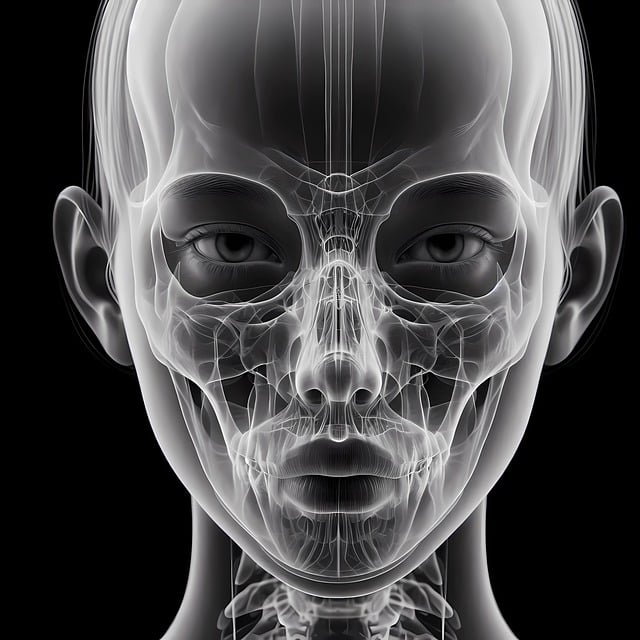AI-powered 3D medical imaging is transforming orthopedic and musculoskeletal diagnostics, providing highly accurate 3D models of bones, joints, and soft tissues. This technology enhances diagnostic accuracy by detecting subtle abnormalities and enables personalized treatment planning. Key applications include evaluating fractures, joint dislocations, and managing trauma cases. Despite data acquisition and interpretation challenges, specialized equipment and advanced analytics drive improved diagnostic accuracy and personalized strategies, revolutionizing patient care and empowering healthcare professionals with more informed decision-making abilities.
“The future of orthopedic and musculoskeletal diagnostics is here, driven by the rapid evolution of AI-powered 3D medical imaging. This cutting-edge technology promises to revolutionize patient care, enabling more accurate assessments and personalized treatment plans. From enhancing anatomical visualization to aiding in complex injury analysis, 3D and 4D imaging are transforming orthopedics. This article explores the rise of AI in these fields, delves into its benefits, challenges, and future prospects, offering insights into how advanced imaging technologies will shape orthopedic care.”
The Rise of AI-Powered 3D Medical Imaging in Orthopedics
The integration of AI into medical imaging has sparked a revolutionary change in orthopedic and musculoskeletal diagnostics. AI-powered 3D medical imaging is emerging as a game-changer, offering unprecedented detail and precision. By analyzing complex datasets generated by advanced scanning techniques like CT and MRI, these intelligent systems can create highly accurate 3D models of bones, joints, and soft tissues. This technology enables orthopedists to visualize and assess anatomical structures in ways previously unimaginable.
This innovative approach enhances diagnostic accuracy and efficiency. AI algorithms can detect subtle abnormalities, such as fractures or degenerative changes, with remarkable clarity. Moreover, these systems facilitate personalized treatment planning by providing a comprehensive understanding of a patient’s unique musculoskeletal architecture. With the ability to predict outcomes and identify potential complications, AI-powered 3D imaging is transforming orthopedic care, promising improved patient outcomes and enhanced clinical decision-making.
Benefits and Applications in Musculoskeletal Diagnostics
The advent of AI-powered 3D medical imaging has revolutionized musculoskeletal diagnostics, offering a multitude of benefits that surpass traditional 2D imaging methods. By providing detailed, three-dimensional visualizations of bones, joints, and soft tissues, these advanced technologies enable orthopedists to detect subtle abnormalities, assess complex injuries, and plan personalized treatment strategies with enhanced precision. This level of detail is particularly crucial in diagnosing conditions affecting the intricate structures of the musculoskeletal system, where even minor variations can significantly impact patient outcomes.
One of the key applications lies in the evaluation of fractures and joint dislocations. 3D imaging allows for a comprehensive analysis of bone fragments and their orientation, aiding in the determination of stable vs. unstable injuries. Moreover, it facilitates the assessment of articular surfaces, cartilage integrity, and the detection of associated soft tissue damage. This is especially valuable in complex trauma cases or when planning surgical interventions like total joint replacements, ensuring optimal implant positioning and alignment for improved patient recovery.
Overcoming Challenges: From Data Acquisition to Interpretation
Overcoming Challenges in orthopedic and musculoskeletal diagnostics involves navigating complex data acquisition and interpretation processes, especially with advancements in AI-powered 3D medical imaging. The journey from capturing detailed 3D or even 4D images to extracting meaningful clinical insights is not without hurdles. One significant challenge lies in the technical aspect of acquiring precise, high-resolution data, requiring specialized equipment and expertise. Additionally, the interpretation phase demands a blend of advanced analytics and radiological knowledge, as AI algorithms must be trained on comprehensive datasets to ensure accurate diagnosis and avoid potential biases.
Despite these challenges, continuous innovations in 3D medical imaging technology are transforming musculoskeletal diagnostics. AI-driven systems offer enhanced visualization tools, enabling healthcare professionals to analyze complex anatomical structures more efficiently. By leveraging machine learning capabilities, these technologies can identify subtle abnormalities or changes over time, leading to improved diagnostic accuracy and personalized treatment planning.
Future Prospects: Enhancing Patient Care with Advanced Imaging Technologies
The future of orthopedic and musculoskeletal diagnostics lies in the increasing integration of advanced imaging technologies, particularly AI-powered 3D medical imaging. These innovative tools promise to revolutionize patient care by providing more accurate and detailed insights into complex structures within the body. By enhancing visualization capabilities, healthcare professionals can better assess injuries, diseases, and abnormalities, leading to more effective treatment plans.
Artificial intelligence algorithms, when combined with high-resolution 3D and 4D imaging, have the potential to detect subtle changes in bone structure, muscle fibers, and soft tissues that may be invisible on traditional 2D images. This level of precision allows for early diagnosis, personalized treatment approaches, and improved patient outcomes. As these technologies continue to evolve, they will undoubtedly foster a new era of orthopedic care, enabling doctors to make more informed decisions and ultimately enhancing the overall healthcare experience.
The integration of AI-powered 3D medical imaging in orthopedic and musculoskeletal diagnostics represents a significant leap forward in patient care. This technology offers enhanced visualization, improved diagnostic accuracy, and personalized treatment planning. As research progresses and challenges are addressed from data acquisition to interpretation, the future looks promising for advanced imaging technologies, potentially revolutionizing the way we approach musculoskeletal disorders.
